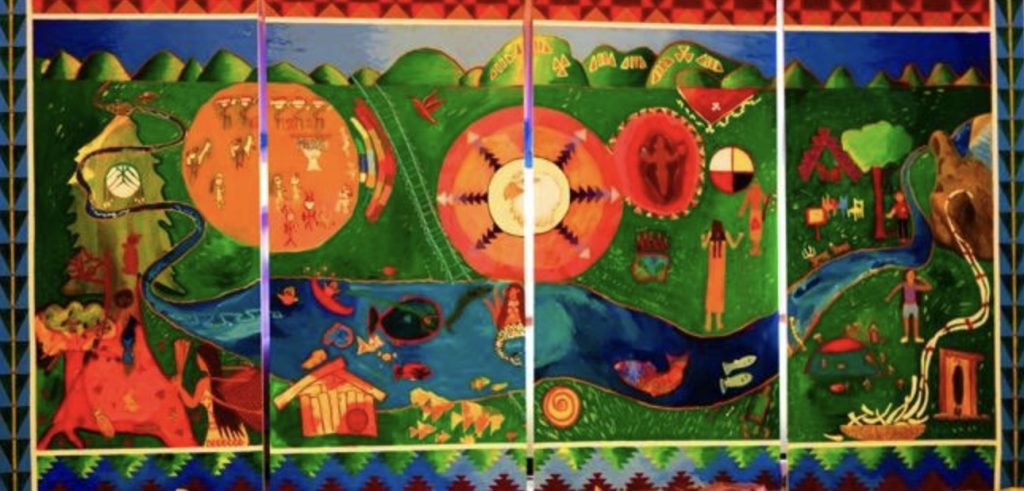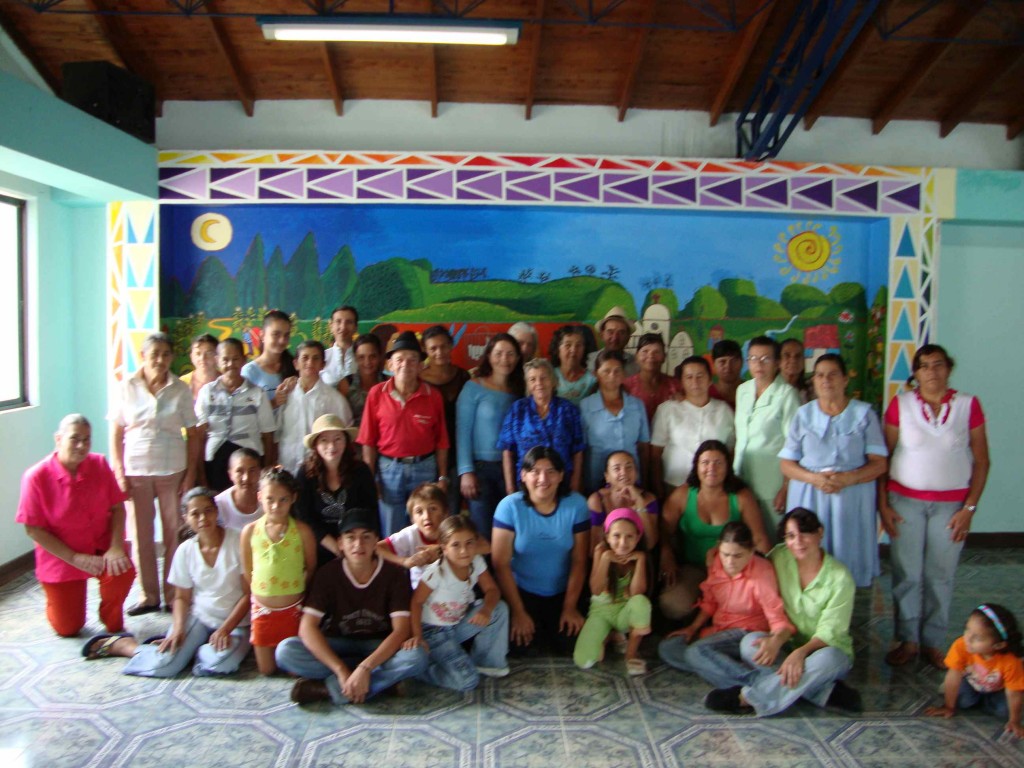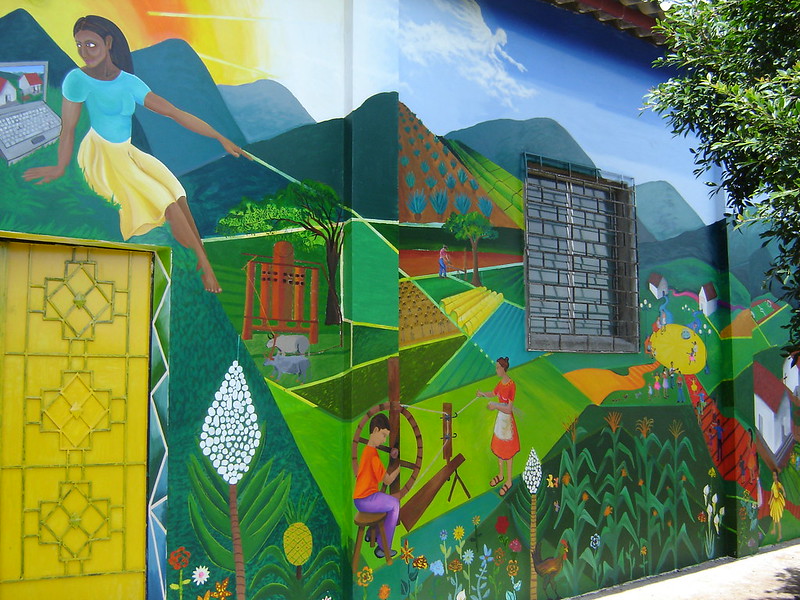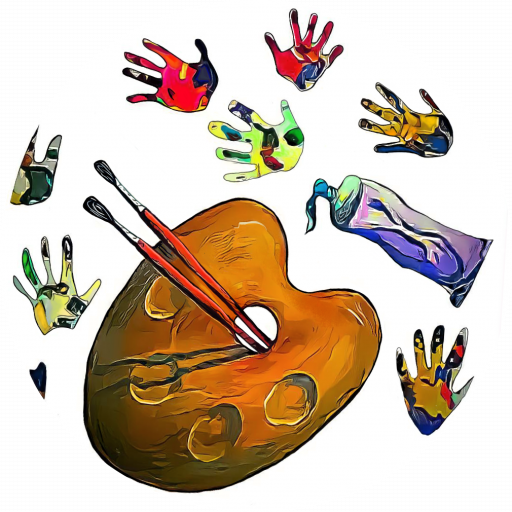About Us
The community art projects created in the Perquin Model focus on the challenges posed by inter-communal and societal conflicts in today’s world.
Our mission is to bring greater awareness through shared town meetings and through the planning of collaborative art interventions and public art pieces.
The collaborative art projects recover historic memory while providing artistic skills and practical expertise in a new model of art education.
The mandate of our school is to create bridges of collaboration with local and political agencies that will welcome art as a contribution of social planning, to develop leadership roles among the participants, especially the youth who will face the challenge to grow up in a collapsed economic scenario threatened by poverty and unemployment.
Through art and creative praxis, children and youth focus on conflict resolution envisioning a proposition for endurable peace.
Mission

Vision

Walls of Hope is an international art and human rights project of art, education, conflict resolution, crime prevention, diplomacy building, community development and preservation of historic memory.
Started in 2005, Walls of Hope facilitates, implements, and teaches art to children, youth, adults, and the elderly.
The Perquin Model is a blueprint that has become a replicable art model implanted successfully in many regions in El Salvador, as well as in Colombia, Guatemala, México, Argentina, Canadá, Switzerland, Germany, Northern Ireland, and the United States.
In 2016, Walls of Hope, born in a war zone in El Salvador, moved to Sincelejo, Colombia, to join the efforts of the Colombian Peace Process in collaboration with Sembrandopaz by using the strategies of art and the practice of communal building in the arduous task of recovery of a country that suffered a 52 year-long civil war.
History
The School of Art and Open Studio of Perquin/ Walls of Hope was started in 2005 in El Salvador.
Four Salvadoran artists/ teachers direct the school: America Argentina Vaquerano Romero, Claudia Verenice Flores Escolero, Rosa del Carmen Argueta, working in collaboration with Claudia Bernardi, founder, artist, and educator from Argentina.
As part of the Peace Accords signed in 1992 ending twelve years of civil war in El Salvador, the United Nations Truth Commission nominated the Argentine Forensic Anthropology Team, Equipo Argentino de Antropología Forense, EAAF, to perform the exhumations of the massacre at El Mozote, Morazán. Rufina Amaya Márquez, the sole survivor of the massacre, stated that the Salvadoran army murdered more than 1000 civilians on December 11th, 1981.
The Argentine Forensic Anthropology Team, EAAF asked Claudia Benardi, artist, and educator from Argentina who founded the Perquin Model, to create the archeological maps that would record the location and finding of human remains, associated objects and the presence of ballistic evidence. After three months of investigation, the allegation of mass murder against civilian population was confirmed including 136 children under the age of 12.
Once my assignment as consultant/ cartographer in the case of the investigation of the massacre at El Mozote concluded, I went to Perquin, a village of 5,000 inhabitants located 4 km. North from where the hamlet of El Mozote once existed.
Perquin had been hugely impacted by the war. The people living there in 1992 were ex combatants or civilians who had recently returned from a refugee camp in Honduras.
The majority of the existent houses were unhabitable. As I looked around amazed at the effects of destruction. I was surrounded with evidence of pain contained on the wounded walls. They were walls of pain. “How?” I wondered, “Could they ever turn into Walls of Hope?”
Since 1992 until 2005, I visited Perquin frequently. It was during those visits to Morazán and to Perquin that I learned about the history of violence inflicted to civilian population during the 12 years civil war, forced displacements of families who had suffered the death of many family members, and the loss of their crops.
They felt overwhelmed by tragedy and were afraid for not retaining historic memory.”
The creation of Walls of Hope responds to the following question:
“ How can the insertion of art be constant in the life of a community?”
The proposal of community building through artistic expression of wall murals implies the creation of a reality that has not previously existed. In this newness, perhaps, is where the kernel of life resides.”
The Perquin model has been replicated in other countries, responding to the needs of communities. (See below: “Selected Collaborative and Community-based Projects, 2007-2022”)
The project continues with funding from non-profit and for-profit organizations, individuals, and grants.
Audience served
Walls of Hope designs, facilitates, and complete collaborative and community-based art projects for children, youth, adults, and the elderly regardless of their political or religious affiliation.
The project exists in the intersection of art and political violence focusing on the pursuit and respect of human rights and social justice.
The communities of people that Walls of Hope serves are survivors of massacres, survivors of torture, victims of forced exiles, asylum seekers, indigenous people, Pueblos Originarios, and incarcerated youth in the United States.
Members of the community are trained to facilitate the various art classes, which continue after the project is complete.
Successful Impact:
The perquin model
A community-based project that engages children, youth, and adults in the creation of art that serves as a component of community building.
A project created with the understanding that there has been trauma, violence and prejudice inflicted to the participants through political duress, state terror, wars, and armed conflicts.
The participants decide on the theme and narration of each piece with the intention to produce a visual testimony that represents their recent history.
A collaborative art project that expands from creativity towards diplomacy, judicial concerns, and the demand for the respect for social and human rights.


Children painting a mural at the massacre place of El Mozote
